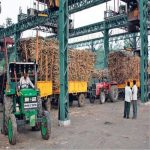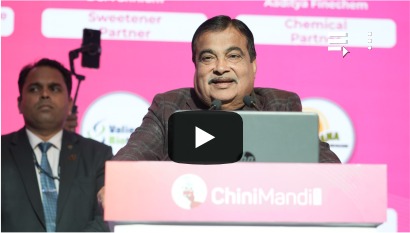I have witnessed first-hand the fast and impressive growth of India’s ethanol sector. Supported by strong government support, steady encouragement from OMCs, and the hard work of our own entrepreneurs we have collectively built a vibrant ecosystem that is a cornerstone of India’s biofuel progress. But this same speed of expansion has brought us to a point where we must think deeply.
Across many states—Karnataka, Maharashtra, Uttar Pradesh, Madhya Pradesh, Bihar, Uttarakhand, and others—we now have 3 to 4 times more production capacity than what OMCs actually require in those regions. This situation did not appear suddenly. It is mainly the result of years of effort by units that have been supplying for the last 3 to 4 years or even longer. These entrepreneurs understood the opportunity, believed in the national goal, and invested boldly.
Their commitment is undeniable. They expanded their plants, improved technology, added new feedstocks, and became strong contributors to India’s blending programme. But this fast capacity growth has also created a visible gap between what the industry offers and what is finally allocated in OMC tenders.
The divisional factor, which decides how much of our supply offer will be accepted, now sits at the heart of the problem. Originally meant to keep things balanced, it is today reducing allocation percentages sharply. This year, many companies that earlier received around 75% of their offer have received only about 30%, even after doubling their offer. In many cases, the actual volume allocated is lower than last year, despite higher capacity and higher supply offers.
This makes us face a tough truth: low allocation is not because of demand shortage—it is because of excess capacity that we ourselves have created through our aggressive entrepreneurship. When capacity grows much faster than demand, the divisional factor rises—and the impact is not theoretical. It is real and it is being felt on the ground by our member units.
As a result, large parts of our capacity remain idle. Plants built with heavy investment and great optimism now struggle to stay fully utilized. Financial pressure is building for many units. And at a wider level, this imbalance raises questions about the stability and direction of the sector.
All this is happening at a time when the ethanol programme has already created a strong wave of rural development, higher farmer income, and large-scale employment—especially in maize-growing regions.
This moment calls for reflection. We must look inward, understand the patterns, and clearly see the reality that is unfolding in front of us.
Because sometimes, the biggest threat to our progress, is the progress we create without balance.
The author is CMD of Gulshan Polyols Ltd and President of Grain Ethanol Manufacturers Association (GEMA).

















